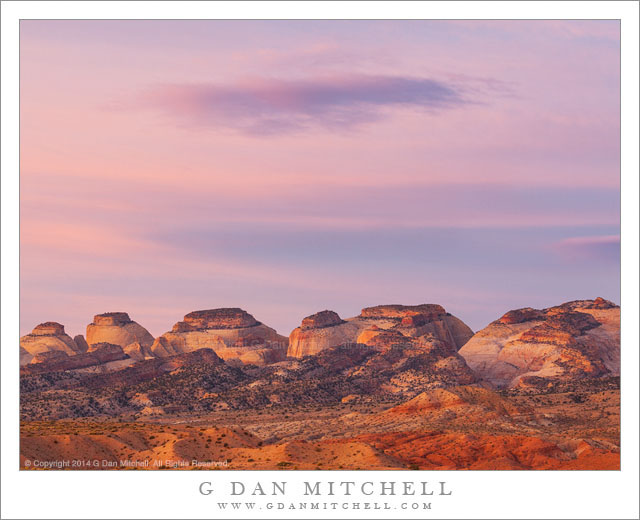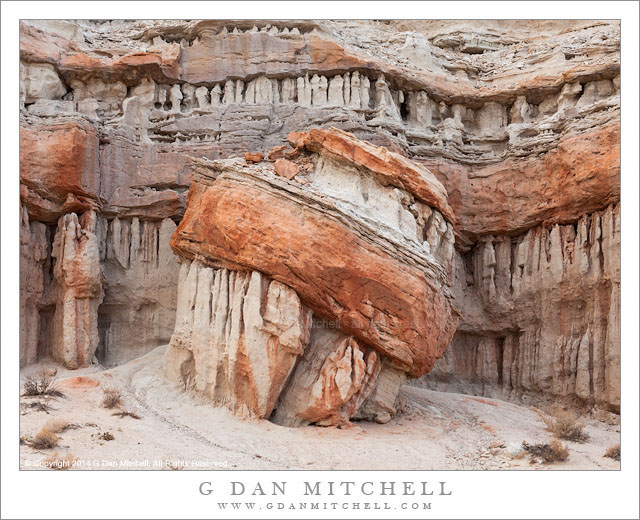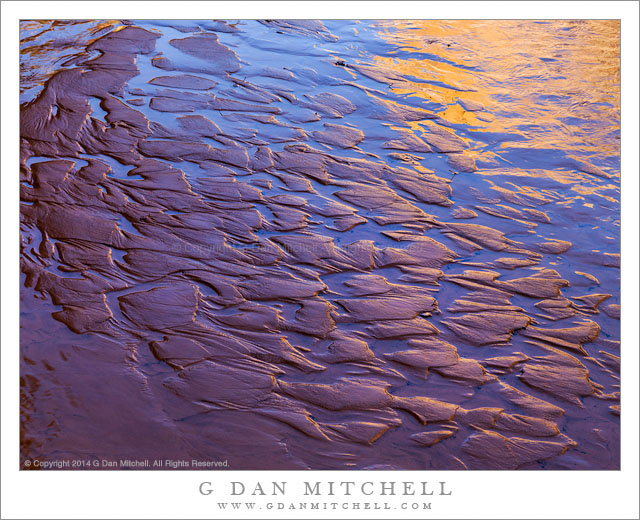
Sunrise, Capitol Reef. Near Capitol Reef National Park, Utah. October 22, 2014. © Copyright 2014 G Dan Mitchell – all rights reserved.
Dawn clouds about the peaks of Capitol Reef National Park
Finding sunrise light like this is a matter of getting up very early, making some decent pre-dawn guesses about what may happen later, finding a good location… and a whole bunch of plain dumb luck. Oh, and persistence helps, too — if you are out there a lot you will inevitably increase the odds that you’ll encounter the very special light. But no one can call up a small cloud centered above a ridge lit by first light that also turns the distant clouds shades of pink and purple.
Our primary plan on this day was to take a rather long drive down the east side of the park, though the ultimate goal was a bit fuzzy — it could have been a slot canyon I know of or it could have been a higher location that I had visited before. We started out in near darkness from our campsite, crossed the park, and then started south. As dawn approached, it was immediately obvious that the sky was just about to do something amazing, so we quickly found a spot with a panoramic view in most directions, stopped the car, grabbed cameras and tripods, and hurried to find compositions that might make use of this light. Since most of the interesting geological features seemed to be a good ways off, I put a very long lens on my camera and focused on small distant details. For a very brief moment, just as the first light began to gently wash over the high peaks of Capitol Reef, this intense color came to the clouds and one small cloud became visible against the lighter background.
 G Dan Mitchell is a California photographer and visual opportunist whose subjects include the Pacific coast, redwood forests, central California oak/grasslands, the Sierra Nevada, California deserts, urban landscapes, night photography, and more.
G Dan Mitchell is a California photographer and visual opportunist whose subjects include the Pacific coast, redwood forests, central California oak/grasslands, the Sierra Nevada, California deserts, urban landscapes, night photography, and more.
Blog | About | Flickr | Twitter | Facebook | Google+ | 500px.com | LinkedIn | Email
Text, photographs, and other media are © Copyright G Dan Mitchell (or others when indicated) and are not in the public domain and may not be used on websites, blogs, or in other media without advance permission from G Dan Mitchell.



